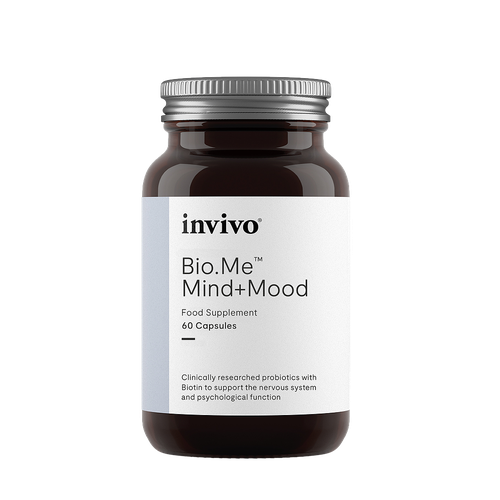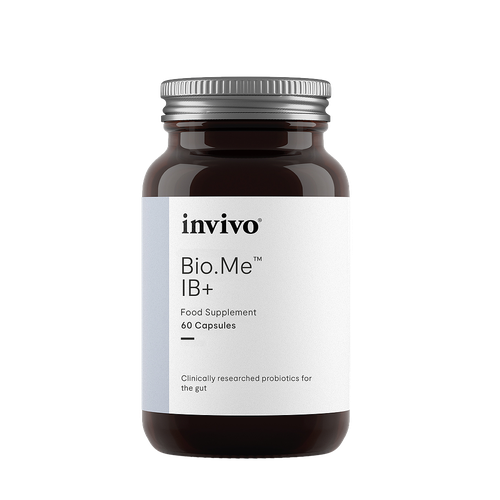Fatty Acid Profile Testing Know Your Fats
-t4lmvs.jpg)
Today’s diet has drifted far from that of our ancestors creating nutrient gaps, deficiencies and imbalances that are potentially disease promoting. Fatty acids (FAs), in particular polyunsaturated fatty acids (PUFAs) omega-3 and 6, are one such group of nutrients where an imbalance appears to have developed. Omega-3 and 6 FAs must come from the diet and much of the shift in their balance could be blamed on over-consumption of omega-6-rich oils and processed foods, farmed meats and industrialised fats, like trans fats, coupled with under-consumption of wild, seasonal foods that naturally contain higher omega-3 levels. Insufficiencies and imbalances in FAs are thought to be critical for the healthy function of numerous body systems, including cardiovascular, neurological, immunological and inflammatory. With many of today’s chronic diseases having an inflammatory component and with research suggesting inflammatory responses are highly modifiable by altering levels and ratios of dietary fats, ‘knowing your fats’ becomes an important step on the road to achieving optimal health.
Knowing your fats
-joycs0.jpg)
Omega Quant Full Fatty Acid Profile
Invivo Clinical, in partnership with OmegaQuant, recommend the Full Fatty Acid Profile which uses a simple blood spot sample and has a speedy turnaround time of 72 hours, but what sets this test apart from many others is the extensive reporting. Not only measuring omega-3, 6, 7 and 9 families of fatty acids and saturated fats but also expressing ratios of omega-3: omega-6, Arachidonic acid (AA): EPA and including blood levels of EPA and DHA using the Omega-3 index. The index is designed to report blood EPA and DHA levels as a percentage; 8% or more is believed to have cardio protective effects, whereas below 4% offers the least cardio protection. Furthermore, the report includes an inverse index for trans fats and lists of trans fat content of certain foods plus the EPA and DHA content of many fish and fish oil supplements.
Considerable research has focused on eicosanoids, the FA derivatives that, amongst their other functions, have strongly opposing effects on the body’s inflammatory responses being either pro-inflammatory or anti-inflammatory in their nature. Inflammation is a physiologically necessary process but is also a recognised component of many chronic diseases; eicosanoids have the capacity to modulate the intensity and duration of the inflammatory responses therefore controlling intake of eicosanoid precursors, namely FAs, is a potential route to influencing inflammation. Generally speaking, omega-6 AA-derived eicosanoids (series 2 prostaglandins) are considered pro-inflammatory (although exceptions are coming to light through further research) whereas omega-3 EPA and DHA-derived eicosanoids (series 3 prostaglandins) have opposing effects. Research suggests that by partially replacing AA in the cell phospholipid layer and altering constituents of the cell membrane in favour of omega-3 FAs, EPA and DHA could decrease production of AA-derived eicosanoids and in turn reduce inflammation. Moreover, the omega-3 and omega-6 pathways compete for the enzyme delta-6-desaturase, which has a greater affinity for omega-3 PUFAs so greater consumption could tip the balance in favour of a less inflammatory state. A wider understanding of the regulatory effects of EPA and DHA has come to light through research into their derivatives, resolvin and protectin, which are believed to regulate the inflammatory response, shutting off inflammation and limiting tissue damage.
The omega-6 fatty acid, dihomogamma-linolenic (DGLA) is the precursor to another family of eicosanoids (series 1 prostaglandins) which have strong anti-inflammatory effects. DGLA derives from dietary linoleic acid (LA) and is the precursor to AA, but EPA is believed to inhibit the conversion of DGLA to AA so measuring levels of dietary EPA and DGLA, when trying to balance out the potential effects of AA, could prove clinically relevant. In addition, the body’s conversion rate of LA to AA is considered to be relatively inefficient so a reported high blood AA level might suggest the need to reduce consumption of AA rich foods, such as grain-fed meat, processed meats and non-organic eggs and concomitantly increase EPA and DHA rich foods such as oily fish to try to redress the balance.
Understanding the client’s baseline to navigate towards balance…
Balance is the key to the many benefits associated with the FAs and most particularly the ratios of dietary intake, in the case of omega-6: omega-3, 4:1 is widely considered an optimal ratio, but one that proves tricky to achieve. FA testing becomes clinically relevant when it provides an understanding of the client’s baseline status within the overall landscape of their daily diet. It reinforces recommendations, encourages greater client compliance and offers opportunities for evidence based practice.
-rdzqyg.jpg)
Bibliography
Calder PC (2009) Biochemie, 91; 791-5 Calder PC (2010) Nutrients, 2(3); 355-74 Deckelbaum RJ, Torrejon C (2012) The Journal of Nutrition, 142;587S-591S Deckelbaum RJ, Worgall TS, Seo T (2006) American Journal of Clinical Nutrition,83 (suppl);1502S-5SEngler MB et al. (2009) Circulation, 119(6);902-7 Gillingham LG, Harris-Janz S, Jones PJ (2011) Lipids, 46(3);209-28 Gribble MO et al. (2016) Journal of the Marine Biological Association of the United Kingdom,
96(1);43-59
Gruss TL ‘Fatty acid blood tests help assess risk for Heart disease’ Natural News, March 2008
www.naturalnews.com
Harris WS (2007) Pharmacological Research, 55(3);217-23
Harris WS, Von Schacky C (2004) Preventative Medicine, 39(1);212-20
Lin PY, et al. (2012) Journal of Clinical Psychiatry, 73(9);1245-54
Lopez S et al. (2016) Current Vascular Pharmacology, epub Jan 17 2016
Mozaffarian D (2009) International Journal of Environmental Research and Public Health, 6;1894-
1916
Nicolle L & A Beirne ‘Biochemical Imbalances in Disease’ 2010 Singing Dragon; London
Simopoulos AP (2002) Biomedicine & Pharmacotherapy, 56;365-79 Vedin I et al. (2012) PLos ONE, 7(4);e35425




